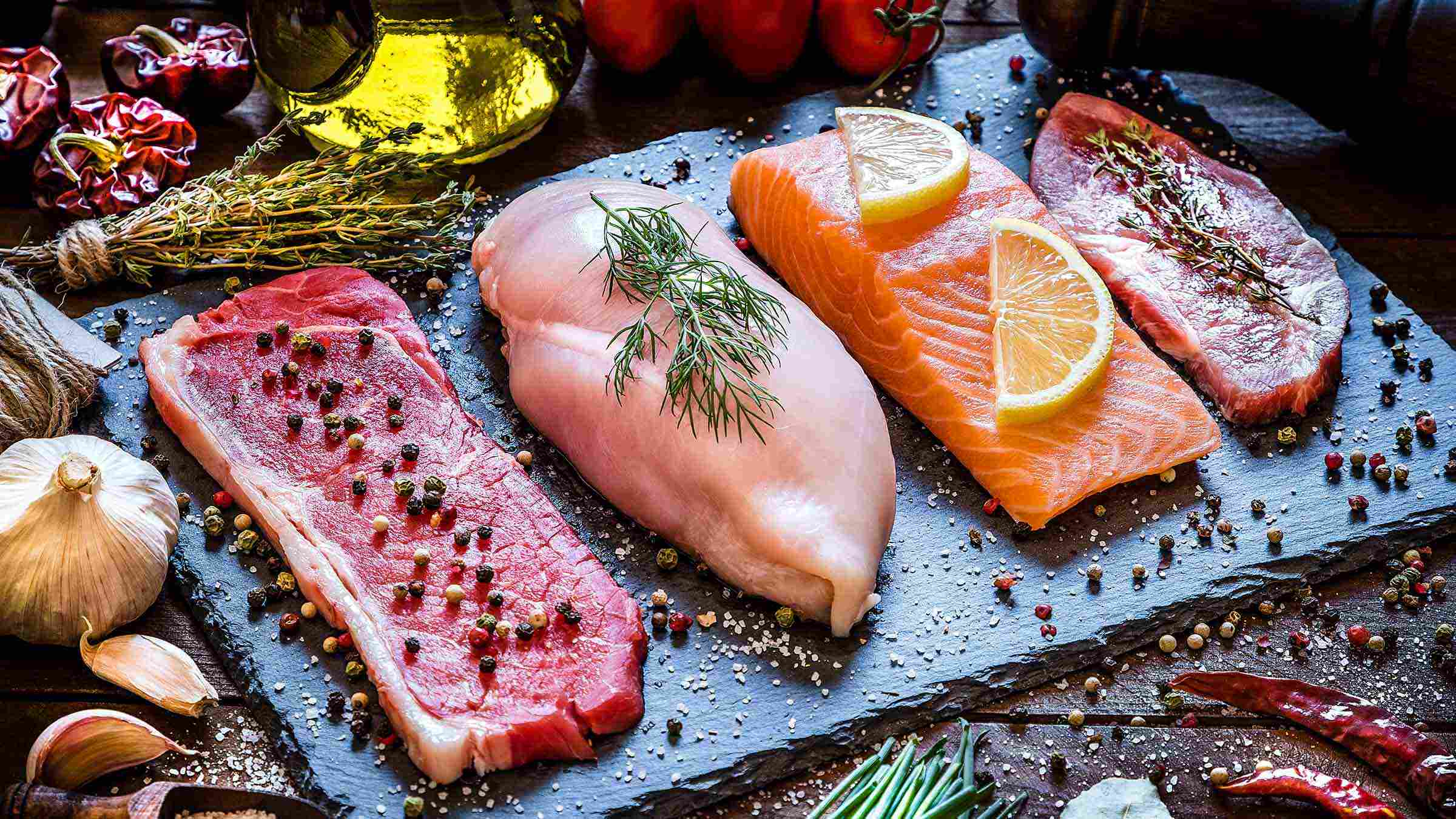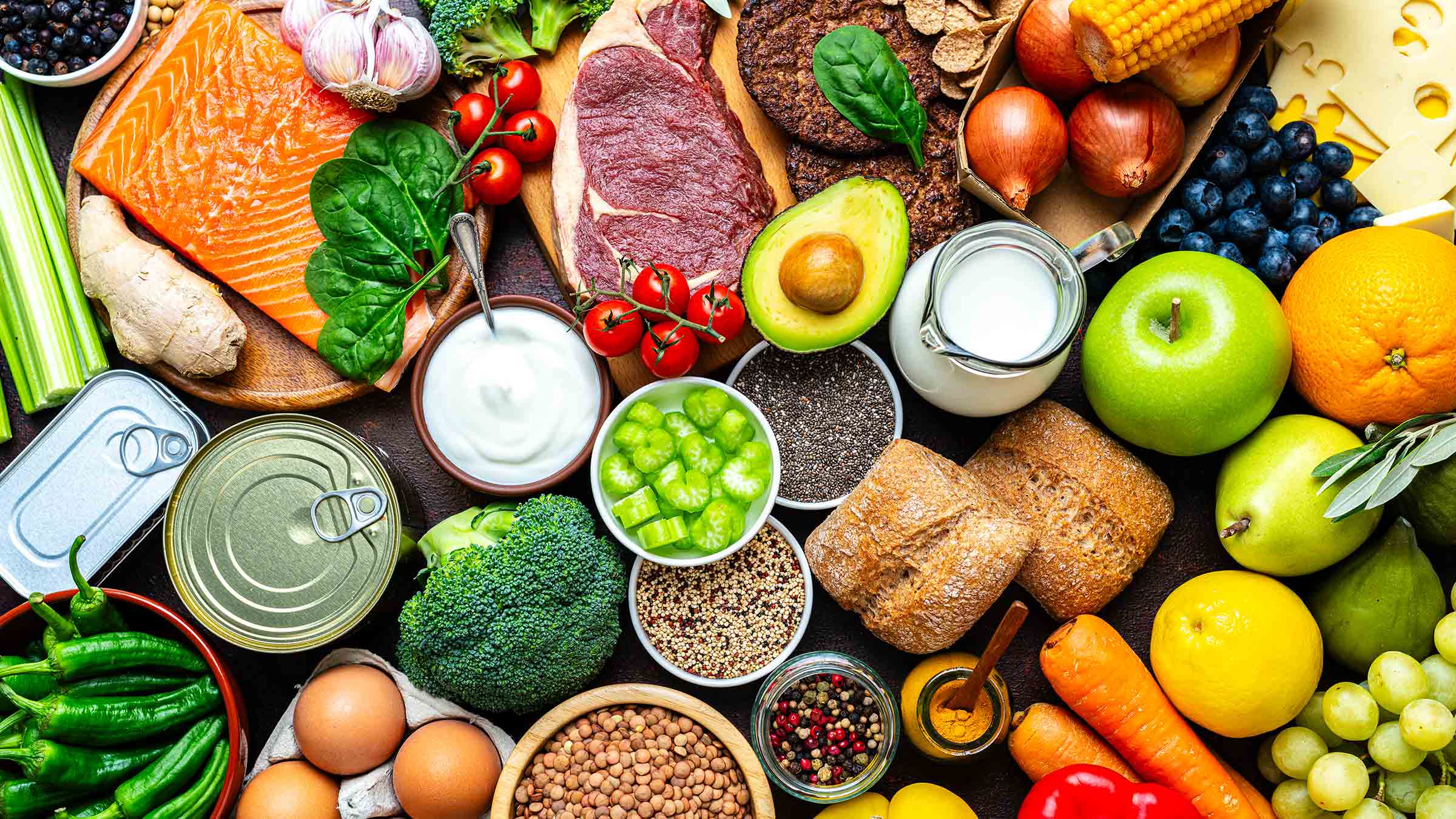
Protein plays many roles in the human body. It’s used in the production of muscle and structural tissues, as well as the production of many hormones, transport molecules, and antibodies. Protein acts as a source of energy and provides essential amino acids (the ones we must get from food, since our bodies are unable to make them).
Protein can come from plants or animals, and each source has advantages and disadvantages for our health. Choosing animal-based sources can be beneficial, as they’re considered complete proteins, meaning they contain all nine essential amino acids. They also contain vitamins and minerals such as vitamin B12 and iron.
However, some animal proteins, such as processed meats and certain cuts of meat that are high in saturated fat, can affect our health negatively. Here’s what you should look for to choose the healthiest option.
What are the healthiest sources of animal protein?
That depends partly on how much fat is in the meat. It’s best to choose leaner protein sources and, as much as possible, cut back on red meat (e.g., pork, beef, lamb) and processed meat (i.e., meat preserved by smoking, salting, curing or adding other preservatives).
Both diets high in red meat and diets high in processed meat have been linked to increased risk of colorectal cancer. If you do choose to eat red meat, choose leaner sources like those included in the list below.
Look for sources that are low in saturated fat, are unprocessed, or are high in heart-healthy unsaturated fats and omega-3s. Some good examples are:
- White-meat poultry, such as chicken or turkey breasts
- Fish, especially fatty fish like salmon, lake trout, mackerel, herring, sardines and tuna
- Pork tenderloin
- Lean or extra-lean cuts of beef such as sirloin or round cuts, greater than 93% lean ground beef
- Eggs and egg whites
- Non-fat/low-fat Greek yogurt, cottage cheese, milk
Remember that it’s still important to eat a balanced diet that includes all food groups and a variety of both plant and animal protein sources, in addition to plenty of fruits, vegetables and whole grains. Although individual plant protein sources (e.g., beans, nuts and seeds) don’t contain all nine essential amino acids, plant sources offer more fiber and a different variety of vitamins and minerals than animal sources of protein.
And even though individual plants don’t contain all nine essential amino acids on their own, when eaten in combination throughout the day, they do provide enough of the essential amino acids to meet the body’s needs.
What are the best ways to cook these proteins?
Cooking proteins changes chemical bonds and makes them more digestible. Cooking meat also kills potentially harmful bacteria on the meat that can cause food-borne illness. However, some methods of preparation are better than others.
Baking, boiling, broiling, poaching or steaming meats is best to avoid adding extra fats to your food. Frying with oils can make the meat or fish less healthy. For example, frying fish at high temperatures can degrade healthy fats in fatty fish. Research by the American Institute of Cancer Research indicates that charring and cooking meats at high temperatures cause compounds to form that can increase risk of cancer. Also, like with any food, adding lots of butter, cheese, sour cream, marinades or salt will affect the overall nutrition of the dish.
What’s the best serving size?
Three to four ounces (21-28 grams of protein) per meal is considered a serving. That amount is approximately the size of a deck of cards.
However, protein requirements can vary from person to person depending on factors like age, activity level or medical conditions. In general, the recommended dietary allowance (RDA) is 0.8 grams per kilogram. For example, the RDA for a 150-pound person would equate to 55 grams of protein per day. The RDA is the amount of a nutrient you need to meet your basic nutritional requirements. In a sense, it’s the minimum amount you need to maintain good health — not the specific amount you’re supposed to eat every day.
For a healthy diet, keep in mind that moderation is key. Eat balanced meals with a great variety of all food groups for adequate nutrition. Make your healthy protein choice fill one-fourth of your plate, another fourth for whole grains, and half of your plate should be non-starchy vegetables.

Healthy eating is within your reach!
Make an appointment with our dietitians or nutritionists.
Schedule an appointment




